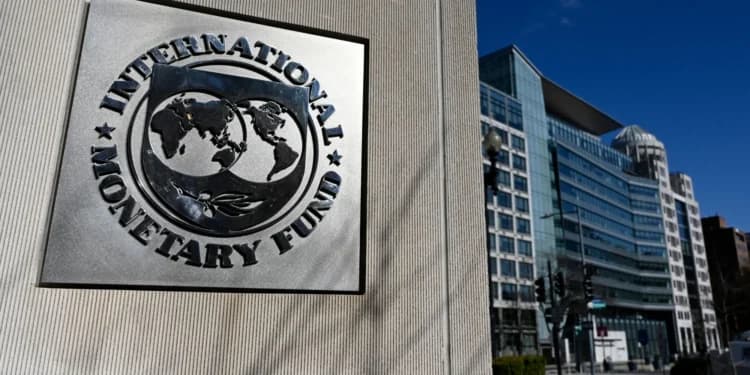We're loading the full news article for you. This includes the article content, images, author information, and related articles.
The global lender's assessment, following a mission to Nairobi, suggests Kenya's currency management may be unsustainable, posing risks to foreign reserves and long-term economic health as the country negotiates a new loan programme.

NAIROBI, KENYA – The International Monetary Fund (IMF) has raised significant concerns over the Kenyan shilling's prolonged stability against the US dollar, describing the situation as "excessively stable" and questioning its alignment with a market-driven exchange rate policy. The assessment was delivered following a high-level IMF staff mission to Nairobi that concluded on Thursday, October 9, 2025.
The IMF team, led by Mission Chief for Kenya Haimanot Teferra, held discussions with President William Ruto, Central Bank of Kenya (CBK) Governor Kamau Thugge, and National Treasury Cabinet Secretary Prof. Njuguna Ndung'u. The talks were foundational for a potential new IMF-supported loan programme after Kenya's previous multi-year arrangement expired.
According to officials familiar with the discussions, the IMF's position is that the shilling's lack of volatility is inconsistent with prevailing global economic shifts, including a weaker US dollar in 2025, which should have theoretically benefited the local currency. This has led to suggestions that the CBK is actively managing the currency, a stance the central bank has consistently refuted, maintaining it only intervenes to smooth out volatility.
Data from the Central Bank of Kenya shows the shilling has remained tightly bound, trading at approximately KSh 129.24 per US dollar for most of the week ending October 23, 2025. This stability has persisted for much of the year, with the currency trading in a narrow band.
An artificially stable or overvalued shilling presents a double-edged sword for the Kenyan economy. While it makes imports, such as fuel, machinery, and consumer goods, cheaper, potentially taming inflation, it simultaneously renders Kenyan exports more expensive and less competitive on the global market. This can harm key foreign exchange earners like tea, horticulture, and tourism.
The core of the IMF's concern lies in the potential impact on Kenya's foreign exchange reserves. To defend a specific exchange rate, a central bank must often sell its holdings of foreign currency, primarily US dollars. While Kenya's usable foreign exchange reserves recently hit a record high of USD $12.08 billion as of October 23, 2025—equivalent to 5.3 months of import cover—this was largely due to inflows from a new Eurobond issuance. Sustained intervention to prop up the shilling could deplete these crucial buffers, jeopardizing the country's ability to service its external debt and pay for essential imports.
The IMF's critique was publicly referenced by Kenya Revenue Authority (KRA) Chairman Ndiritu Muriithi, who noted the Fund's view that the stable exchange rate might be interfering with monetary policy transmission and inflation targeting. He expressed his surprise at the IMF's position, highlighting a divergence in opinion between Kenyan authorities and the Bretton Woods institution.
CBK Governor Kamau Thugge has maintained that the shilling's stability is a reflection of sound monetary policy and diversified inflows from remittances and exports. In an October 2025 media briefing, the Governor noted that the exchange rate has been "range-bound between 129 and about 130" for a year and a half, which he described as a positive sign of economic resilience. The CBK's Monetary Policy Committee had earlier, on October 7, 2025, lowered the Central Bank Rate (CBR) to 9.25 percent, citing stable inflation and exchange rates.
The IMF's concerns are a critical factor as Kenya negotiates a new funding facility. The Fund's post-mission statement emphasized that policy priorities for a new programme would include enhancing fiscal credibility and ensuring the sustainability of public finances and debt. Allowing for greater exchange rate flexibility is often a key condition in IMF programmes to ensure a country's external position is sustainable.
As discussions continue ahead of the IMF and World Bank Annual Meetings, Kenyan policymakers face the challenge of balancing the benefits of a stable currency against the long-term risks highlighted by the IMF. The outcome of these negotiations will be pivotal in shaping Kenya's macroeconomic policy and its relationship with international financial institutions for the foreseeable future.
Keep the conversation in one place—threads here stay linked to the story and in the forums.
Other hot threads
E-sports and Gaming Community in Kenya
Active 7 months ago
Popular Recreational Activities Across Counties
Active 7 months ago
The Role of Technology in Modern Agriculture (AgriTech)
Active 7 months ago
Investing in Youth Sports Development Programs
Active 7 months ago